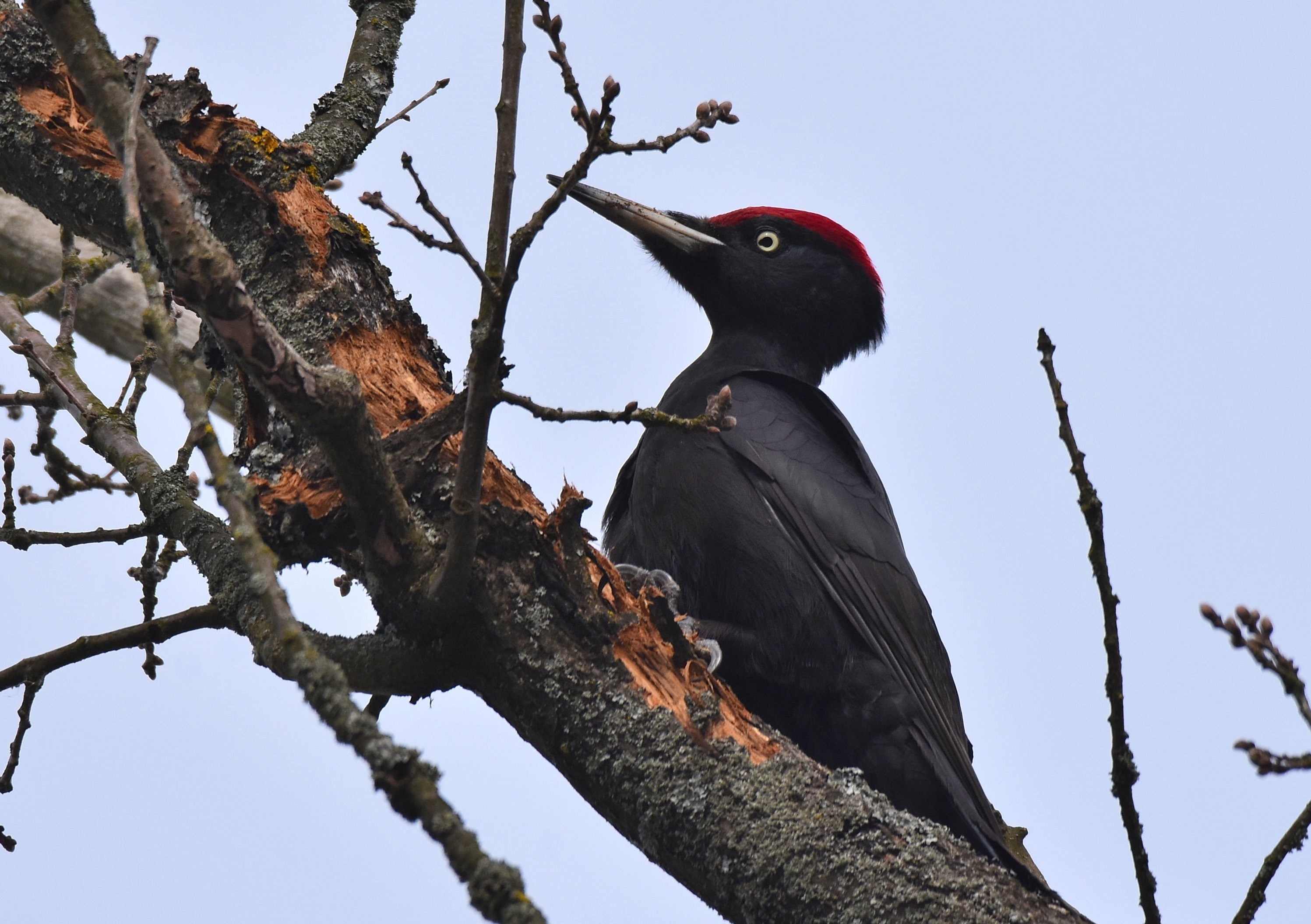
Its drums are slower compared to other North American species. Like other woodpeckers, it also produces a drumming sound (sounds like four taps ) with its beak as it pecks into trees. The rattle-call is a short burst that sounds similar to a bouncing ball, while that of the hairy woodpecker is a shorter burst of the same amplitude. One may identify the woodpecker by the pik-call, counting half a second between piks (a total of four must be heard). The downy woodpecker gives a number of vocalizations, including a short pik call. The downy woodpecker's bill is shorter than its head, whereas the hairy woodpecker's bill is approximately equal to head length. The downy woodpecker is virtually identical in plumage pattern to the larger hairy woodpecker, but it can be distinguished from the hairy by the presence of black spots on its white tail feathers and the length of its bill.
Black woodpecker Patch#
Adult males have a red patch on the back of the head whereas juvenile birds display a red cap. They have a black tail with white outer feathers barred with black. There is one white bar above the eye, and one below. The downy woodpecker is mainly black on the upperparts and wings, with a white back, throat and belly and white spotting on the wings. The total length of the species ranges from 14 to 18 cm (5.5 to 7.1 in) and the wingspan from 25 to 31 cm (9.8 to 12.2 in). pubescens ( Linnaeus, 1766) – southeast USAĭescription The female lacks the red patch on the back of the headĪdult downy woodpeckers are the smallest of North America's woodpeckers, but there are many smaller species elsewhere, especially the piculets. leucurus ( Hartlaub, 1852) – Rocky Mountains (southeast Alaska to southwest USA) turati ( Malherbe, 1860) – central Washington to central California gairdnerii ( Audubon, 1839) – west Oregon to northwest California fumidus ( Maynard, 1889) – southwest Canada and west Washington medianus ( Swainson, 1832) – central Alaska to east Canada and central and east USA glacialis ( Grinnell, 1910) – southeast Alaska Why they evolved this way cannot be explained with confidence it may be relevant that the species exploit rather different-sized foodstuffs and do not compete very much ecologically. ĭespite their close resemblance, the downy and hairy woodpeckers are not very closely related the outward similarity is an example of convergent evolution. Within the genus, the downy woodpecker is sister to a clade containing Nuttall's woodpecker ( Dryobates nuttalli) and the ladder-backed woodpecker ( Dryobates scalaris). In the revised generic classification, the downy woodpecker was placed with four other species in the resurrected genus Dryobates, that had been erected in 1826 by the German naturalist Friedrich Boie with the downy woodpecker as the type species. The downy woodpecker was usually placed in either Dendrocopos or Picoides, but a molecular phylogenetic study published in 2015 found that these genera did not form monophyletic groups. Linnaeus specified the type locality as America septentrionali (North America) but the locality is now restricted to South Carolina. The specific epithet pubescens is the Latin for "pubescent" or "downy".

When in 1766 the Swedish naturalist Carl Linnaeus updated his Systema Naturae for the twelfth edition, he included the downy woodpecker, coined the binomial name Picus pubescens and cited Catesby's book. The downy woodpecker was described and illustrated with a hand-coloured plate by the English naturalist Mark Catesby in his The Natural History of Carolina, Florida and the Bahama Islands, which was published between 17. They can be distinguished from hairy woodpeckers by their black-spotted white tail feathers and a shorter bill. The smallest of North America's woodpeckers, downy woodpeckers are mainly black and white, with adult males having a red patch on the back of the head. Seven subspecies of the downy woodpecker are recognized, inhabiting different regions across North America. The downy woodpecker is very similar in appearance to the hairy woodpecker, although they are not closely related.Their resemblance is a result of convergent evolution. Downy woodpeckers are native predators of the European corn borer, contributing to controlling this invasive species. The bird nests in tree cavities and feeds primarily on insects, although it supplements its diet with seeds and berries. Downy woodpeckers primarily live in forested areas throughout the United States and Canada, with the exception of deserts in the southwest and the northern tundra. Length ranges from 14 to 18 cm (5.5 to 7.1 in). The downy woodpecker ( Dryobates pubescens) is a species of woodpecker, the smallest in North America.


 0 kommentar(er)
0 kommentar(er)
